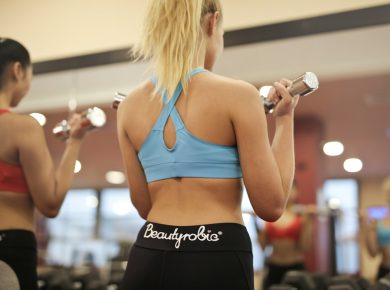Second skin clothing has revolutionized the way we approach performance wear. These garments are designed to mimic the feeling of a second skin, offering unparalleled comfort and functionality for various activities. In this article, we will delve into the key features of second skin clothing that enhance performance, including moisture-wicking, breathability, and flexibility.
Introduction to Second Skin Clothing

Second skin clothing, also known as compression wear or performance apparel, is designed to fit snugly against the body, providing support and enhancing performance during physical activity. Originally popular among athletes and fitness enthusiasts, second skin clothing has now gained widespread popularity among everyday consumers for its comfort and versatility.
Table 1
| Heading | Subheading |
|---|---|
| 1. Introduction to Second Skin Clothing | – |
| 2. Importance of Performance in Clothing | – |
| 3. Moisture-Wicking Technology | – What is Moisture-Wicking? – Benefits of Moisture-Wicking in Second Skin Clothing |
| 4. Breathability in Second Skin Clothing | – Definition of Breathability – How Breathability Enhances Performance |
| 5. Flexibility as a Key Feature | – Understanding Flexibility in Fabric – Impact of Flexibility on Movement and Comfort |
| 6. Durability and Longevity | – Materials Used for Second Skin Clothing – Ensuring Longevity for Performance Continuity |
| 7. Comfort and Fit | – Importance of Comfort in Performance Clothing – Achieving the Perfect Fit |
| 8. Versatility in Second Skin Clothing | – Transitioning from Athletic Wear to Everyday Apparel – How Versatility Adds Value |
| 9. Innovation in Performance Fabrics | – Latest Technological Advancements – Future Trends in Second Skin Clothing |
| 10. Sustainability in Performance Wear | – Eco-Friendly Materials and Manufacturing Processes – Ethical Considerations in Performance Fashion |
| 11. Comparing Second Skin Brands | – Top Brands in the Market – Differentiating Factors |
| 12. Consumer Reviews and Feedback | – Real-Life Experiences with Second Skin Clothing – Impact on Performance and Comfort |
| 13. Tips for Choosing the Right Second Skin Apparel | – Factors to Consider Before Purchase – Finding the Best Fit for Your Needs |
| 14. Maintenance and Care Instructions | – Extending the Lifespan of Second Skin Garments – Washing and Storage Recommendations |
| 15. Conclusion | – |
Table of Contents
Table 2
| Performance and Functionality: Highlighting the Advantages of Second Skin Clothing |
|---|
| – Introduction to Second Skin Clothing – Importance of Performance in Clothing – Moisture-Wicking Technology – Breathability in Second Skin Clothing – Flexibility as a Key Feature – Durability and Longevity – Comfort and Fit – Versatility in Second Skin Clothing – Innovation in Performance Fabrics – Sustainability in Performance Wear – Comparing Second Skin Brands – Consumer Reviews and Feedback – Tips for Choosing the Right Second Skin Apparel – Maintenance and Care Instructions – Conclusion |
Importance of Performance in Clothing

Performance wear goes beyond aesthetics; it plays a crucial role in optimizing physical performance and comfort. Whether you’re hitting the gym, going for a run, or simply running errands, wearing the right clothing can make a significant difference in how you feel and perform.
Moisture-Wicking Technology
What is Moisture-Wicking?
Moisture-wicking technology is a key feature of second skin clothing that helps keep the body dry and comfortable during intense workouts or activities. This technology works by pulling sweat away from the skin and onto the fabric’s surface, where it can evaporate quickly.
Benefits of Moisture-Wicking in Second Skin Clothing

By keeping the body dry, moisture-wicking fabric prevents chafing, irritation, and discomfort, allowing you to stay focused on your performance. Additionally, moisture-wicking technology helps regulate body temperature, keeping you cool in hot weather and warm in cold conditions.
Breathability in Second Skin Clothing
Definition of Breathability
Breathability refers to the ability of fabric to allow air and moisture to pass through, keeping the wearer cool and comfortable during physical activity. Second skin clothing is engineered with breathable fabrics that promote airflow and ventilation, enhancing overall comfort.
How Breathability Enhances Performance
Breathable fabrics prevent overheating by allowing excess heat and moisture to escape, keeping you feeling fresh and dry throughout your workout. Improved airflow also reduces the risk of odor-causing bacteria, ensuring that your clothing stays fresh and odor-free.

Flexibility as a Key Feature
Understanding Flexibility in Fabric
Flexibility is essential in performance clothing, as it allows for unrestricted movement and maximum range of motion. Second skin clothing is made from stretchy materials that conform to the body’s contours without restricting movement, providing a full range of motion during any activity.
Impact of Flexibility on Movement and Comfort
The flexibility of second skin clothing enhances comfort and performance by minimizing friction and bunching, allowing you to move freely without feeling restricted. Whether you’re stretching, bending, or sprinting, flexible fabrics ensure a comfortable and supportive fit.
Durability and Longevity
Materials Used for Second Skin Clothing
Second skin clothing is typically made from high-performance fabrics such as spandex, polyester, and nylon, which are known for their durability and resilience. These materials are designed to withstand the rigors of intense workouts and repeated washings, ensuring long-lasting performance.
Ensuring Longevity for Performance Continuity
To prolong the lifespan of your second skin garments, it’s essential to follow proper care instructions, such as washing them in cold water and avoiding harsh detergents. Investing in high-quality, well-constructed clothing from reputable brands can also help ensure durability and performance continuity.
Comfort and Fit

Importance of Comfort in Performance Clothing
Comfort is paramount when it comes to performance clothing, as it directly impacts your ability to focus and perform at your best. Second skin clothing is designed to provide a snug yet comfortable fit that feels like a second skin, minimizing distractions and discomfort during workouts.
Achieving the Perfect Fit

Finding the right size and fit is crucial when purchasing second skin clothing. Look for garments that offer compression and support without feeling too tight or restrictive. Pay attention to sizing charts provided by manufacturers and consider trying on different sizes to find the perfect fit for your body type.
Versatility in Second Skin Clothing
Transitioning from Athletic Wear to Everyday Apparel
One of the advantages of second skin clothing is its versatility. While originally designed for athletic performance, these garments are now commonly worn as everyday apparel due to their comfort and style. Whether you’re working out or running errands, second skin clothing offers a seamless transition from the gym to the streets.
How Versatility Adds Value
Versatile second skin clothing allows you to get more mileage out of your wardrobe, reducing the need for multiple outfit changes throughout the day. With the right pieces, you can seamlessly transition from a workout to a social event without sacrificing comfort or style.
Innovation in Performance Fabrics
Latest Technological Advancements
The field of performance fabrics is constantly evolving, with manufacturers continually innovating to enhance comfort, performance, and sustainability. Recent advancements include the development of eco-friendly materials, advanced moisture-wicking technologies, and seamless construction techniques.
Future Trends in Second Skin Clothing
Looking ahead, we can expect to see further advancements in performance wear, including the integration of smart technology, sustainable materials, and customizable features. As consumers demand more from their clothing, manufacturers will continue to push the boundaries of innovation to meet their needs.

Sustainability in Performance Wear
Eco-Friendly Materials and Manufacturing Processes
As environmental concerns become increasingly important, many performance wear brands are prioritizing sustainability in their manufacturing processes. This includes using recycled materials, reducing water and energy consumption, and implementing eco-friendly production methods.
Ethical Considerations in Performance Fashion
In addition to environmental sustainability, ethical considerations such as fair




